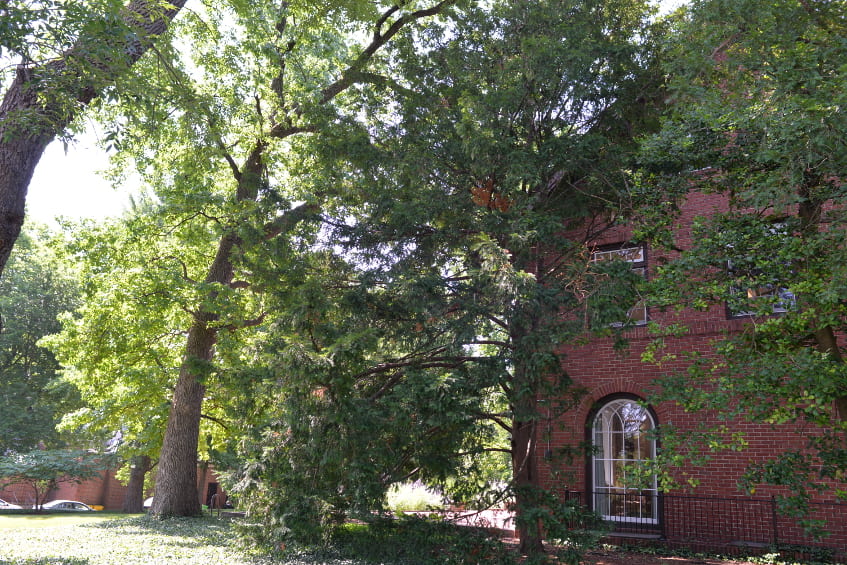English Yew
Arbor walk #65, Treekeeper ID #5329

Though associated with England, this tree is actually native to all of Europe, as well as southwestern Asia and Northern Africa. Red-brown scaly bark and evergreen dark green foliage ensures this tree is an attractive addition to landscapes year-round.
The English Yew prefers a mild climate and is intolerant of temperature extremes, meaning St. Louis winters are often too harsh for these trees to grow outside of certain sheltered areas. Though classified as a conifer, the tree does not produce cones but instead develops small red berry-like fruits. These berries are eaten by many birds, but like all other parts of the tree, are poisonous to humans if ingested. The Yew was regarded as a symbol of death and resurrection in Christianity and for Celts in particular. This is because not only is the Yew poisonous, but will easily propagate and grow from seeds once fallen to the ground.
| Common Name | English Yew |
|---|---|
| Latin Name | Taxus baccata |
| Indigenous Name(s) | |
| Cultivar/Variety | |
| Commercial Name |